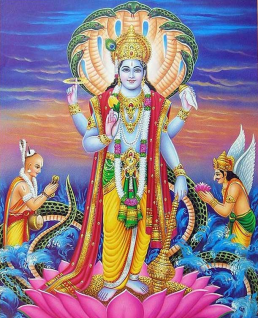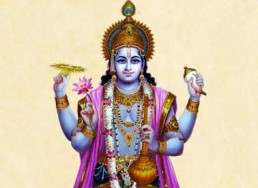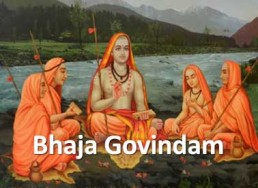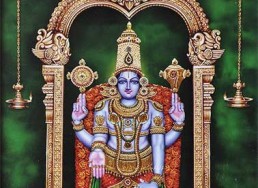Swayam Vyakta Sthalam
श्रीमुष्णं वेङ्कटाद्रिं च साळग्रामं च नैमिशम् ।
तोयाद्रिं पुष्करं चैव नरनारायणाश्रमम् ।
अष्टौ मे मूर्तयः सन्ति स्वयंव्यक्ता महीतले ॥
śrīmuṣṇaṃ veṅkaṭādriṃ ca sāl̤agrāmaṃ ca naimiśam .
toyādriṃ puṣkaraṃ caiva naranārāyaṇāśramam .
aṣṭau me mūrtayaḥ santi svayaṃvyaktā mahītale ..

Description
There are eight self-manifested temples of Vishnu. The belief is that Srihari Vishnu appeared here and the main murti worshipped in the temple is of divine origin. The temples are known as Swayam Vyakta Kshetras or Swayambhu temples. They are 1) Sri Ranganathaswamy Temple at Srirangam – This is the most important shrine among the eight temples. 2) Tirupati Balaji Temple, Tirumala 3) Bhoovaraha Swamy Temple in Sri Mushnam at Cuddalore 4) Vanamamalai Perumal Temple, also known as Sri Thothadri Nathan temple or Sri Vara Mangai, near Tirunelveli. 5) Salagramam Temple in Nepal – At the Gandaki River in Nepal Vishnu takes the form of Salagrama Stone 6) Varaha Temple in Pushkar 7) Naimisharanya in Uttar Pradesh. This is a holy spot in Hinduism. Brahma asked saints to reside here and spread the teachings of Sanatana Dharma. 8) Badrinath Temple in Uttarakhand.
Other Vishnu Shlokams
Acyutam Kesavam
Everybody should meditate regularly upon Achyuta, Kesava, Vishnu, Hari, Satya, Janardhana and Narayana, the swan, which signifies the quintessence of things.
Akasat Patitam Toyam
As all rains falling from the sky reach the ocean; so also the prayers to all gods ultimately get to the Lord Keshava.
Apavitra Pavitro
Om, if one is Apavitra (Impure) or Pavitra (Pure), or even in all other conditions, he who remembers Pundarikaksha (another name of Sri Vishnu, literally meaning with lotus-like eyes), he becomes pure
Bhaja Govindam
Shlokams,Vishnu,Sankara,Govinda,Krishna,Prakarana Grantha
Bhaja Govindam is one of the most popular hymns penned by Adi Shankaracharya. He has packed into the Bhaja Govindam song the substance of all Vedanta, and set the oneness of Jnana and Bhakti to melodious music.
Kayena Vaca
Whatever I do either by body, speech, mind or sensory organs, either with my personal knowledge or natural trait, I surrender and submit all to that to supreme divine Narayana.
Lakshmi Narasimha Karavalambam
Narasimha is a fierce avatar of the Hindu god Vishnu, one who incarnates in the form of part lion and part man to destroy evil and end religious persecution and calamity on Earth, thereby restoring Dh
Megha Syamam
Salutations to Sri Vishnu who is beautiful like the dark clouds, and who is wearing yellow garments of silk; Who has the mark of Srivatsa on his chest; and whose body is shining with the radiance of t
Namami Narayana Pada
I salute the lotus-feet of Narayana, always, propitiate Narayana, speak of the pure name of Narayana and bear in mind the immutable factuality of Narayana.
Narayanam Hrishikesam
I salute Narayana, Hrishikesa, Govinda, Garudadhwaja, Vaasudeva, Hari, Krishna and Kesava.
Narayaneti Vagvalvi
The four letters 'Na', 'Ra,'Ya', 'Na' are the four shoots on the creeper of speech and are undoubtedly indicative of the four Purusharthas- Dharma, Artha, Kaama and Moksha.
Ranganatha Ashtakam
Ranganatha Ashtakam was written by Adi Sankara Bhagavatpada when he stood before Sri Ranganatha swamy in Srirangam, during his travels. This Ashtakam reveals that Adi Sankara was overwhelmed by Lord R
Sashanka Chakram Sakirita
I salute, prostrate with my head, to that four-armed Lord Vishnu, who is ornamented with the shankh (conch) and chakra (the divine wheel), the crown and ear-drops, yellow silk robes, lotus-eyes, decor
Shantakaram
We bow to the only lord of all worlds, Vishnu who is of peaceful appearance, reclining on the serpent, with a lotus from the navel, lord of gods, the basis of the universe, vast like the sky, coloured
Venkatesa Suprabhatam
This shlokam is taken from Sri Valmiki's Srimadh Ramayanam. During the journey with Sage Viswamitra, both Rama and Lakshmana had rested for the night on the banks of the Ganga river. As the dawn was
Vishnu Sahasranamam
The Vishnu Sahasranam is found in the Mahabharatha. Literally translated this means thousand names of Vishnu. This is found in the Anushasanika Parvam (chapter relating to orders or rules to the kings) of Mahabharatha. Though it describes one…
Swayam Vyakta Sthalam – Vishnu – In Sanskrit with English Transliteration, Translation and Meaning. Commentary for selected Shlokams.



